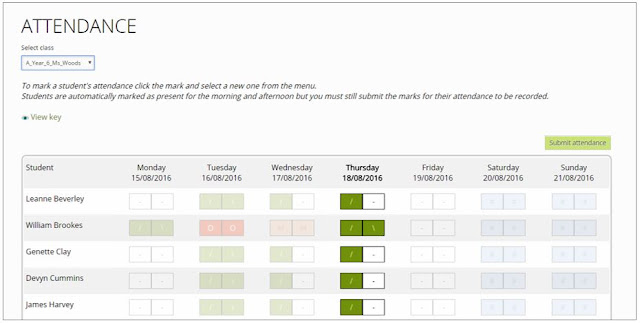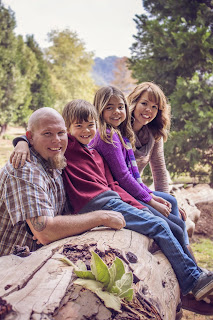What is a Flipped Classroom?
The flipped classroom is a teaching model in which the
typical classroom and homework elements of a course are reversed. Students
watch short videos/lectures at home before the class session, while class time
is devoted to exercises, projects or discussions. The video element is a key
ingredient in the flipped approach and is either created by the class teacher
or selected from an online repository. Within the classroom, activity learning and concept engagement takes place with the help of the teacher.
What is the Value?
The value of a flipped class is in the workshop style class
time where students can inquire about the lecture/video content, test their skills in
applying knowledge and interact with classmates in hands-on activities. This
shifts the focus of the class from the teacher onto the students, making
learning intentionally learner-centred and allowing students to explore topics
in greater depth, creating meaningful learning opportunities within the
classroom. Teachers are able to provide instant
feedback on student work and are on hand to help students and explain more difficult
concepts. They are able to give support to students who traditionally may have
struggled completing work at home due to lack of provision or guidance.
What Takes
Place in the Classroom?
Class activities vary but may include: in-depth laboratory experiments, using math
manipulatives and emerging mathematical technologies, debate or speech presentation, current
event discussions, original document analysis, project-based learning, peer reviewing, and skill
development or concept practice. Because these types of active learning
allow for highly differentiated instruction, more time can be spent in class on
higher-order thinking skills such as problem-finding, collaboration, design and
problem solving as students tackle difficult problems, work in groups,
research, and construct knowledge with the help of their teacher and peers.
A teacher's interaction with students in a flipped classroom can be less instructive and more personalised, and students are actively involved in knowledge
acquisition and construction as they participate in and evaluate their learning.

In 2011 educators at Clintondale High
School flipped every classroom. The
school Principal led the effort to help teachers develop plans for flipped
classrooms. He worked with the social studies teacher, to run two classes with
identical material and assignments, one flipped and one conventional. The
flipped class had many students who had already failed the class — some
multiple times. After 20 weeks, students in the flipped classroom were
outperforming students in the traditional classroom. Further to this, no students in the
flipped classrooms scored lower than a C+, whereas the previous semester 13% had
failed. The traditional classroom showed no change.
The next year when teachers used a flipped model in the 9th grade, the
English failure rate dropped from 52% to 19%; in math, from 44% to 13%; in science, from 41%t to 19%; and in social
studies, from 28% to 9%. After 2011 the now-flipped school's
failure rate dropped from 30 to 10 percent. Graduation rates soared above 90
percent. College attendance went from 63% in 2010 to 80% in 2012.
Clintondale teachers
found that shorter videos (3–6 minutes) were the most effective for students.
The school uses audio files, readings and videos from the Khan Academy, TED and
other sources. Students favoured the changes. Students unable to watch the
videos at home watch the videos in school.
 “In
addition to flipping the classroom, we wanted to give our students the
opportunity to learn about each subject or topic from someone who is a
recognized expert in each area. So we decided to team with other schools across
the country and world. Now, some of our calculus students are able to watch
video lectures from a math teacher in a private school in Virginia, and our
students learning about the Holocaust can watch videos made by a teacher in
Israel who just brought her class to Auschwitz. This type of learning network
will enable us to close the gap of inequality that schools are subjected to
because of their financial standing, and provide all students, no matter what
district they’re from, with information from the best teacher or expert in any
field.” – Greg Green, Principal at Clintondale High School.
“In
addition to flipping the classroom, we wanted to give our students the
opportunity to learn about each subject or topic from someone who is a
recognized expert in each area. So we decided to team with other schools across
the country and world. Now, some of our calculus students are able to watch
video lectures from a math teacher in a private school in Virginia, and our
students learning about the Holocaust can watch videos made by a teacher in
Israel who just brought her class to Auschwitz. This type of learning network
will enable us to close the gap of inequality that schools are subjected to
because of their financial standing, and provide all students, no matter what
district they’re from, with information from the best teacher or expert in any
field.” – Greg Green, Principal at Clintondale High School.
My Learning and the Flipped Classroom
The My
Learning Fusion VLE provides an ideal platform for flipped learning, making content
easily accessible across devices and locations. Teachers are able to upload or
link to videos and resources in customised class and learning spaces, as well
as having the option to create blogs and forums to encourage student
interaction and discussion online as well as in the classroom. Content remains
available for students to revisit for revision or consolidation and is also a
great way of minimising the effects of student absences. Features such as ClusterPad, Content Library, MLTV, Blogs and Forums make Fusion the perfect platform for a Flipped Classroom.































